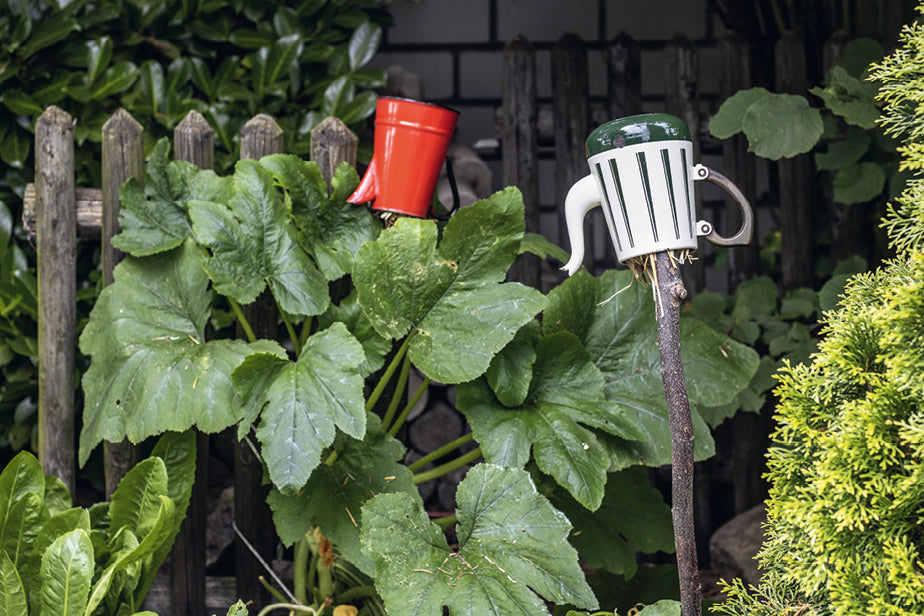DIY ladybug house quickly built
Ladybugs are the most powerful weapon against aphids. To keep these pretty beetles on our good side, we build them a ladybug house, where they can retreat during the winter and in whose environment they can reproduce and eat their fill.

Shelter for ladybugs
In the wild, ladybugs find shelter between logs, in piles of leaves, under moss, or in cracks in stones and walls. You probably already provide them with space if you leave some corners untouched and untouched.
In your vegetable garden and on your balcony, you can specifically attract ladybirds so that they find a home in the immediate vicinity of your valuable vegetable plants and fruit bushes.
This is what you need
Sturdy wooden pole or fence post, about 150 cm long
old tea / coffee pot
Straw, dry leaves or wood wool
Let's go!
Clean the container and dry the inside thoroughly.
Pack leaves, straw or wood wool relatively tightly, but not too tightly, into the can.
Pound the wooden stake into the ground in a sunny, sheltered spot and place the pot on the stake with the opening facing down. Alternatively, you can place the pot over a fence post.
The ladybug house should be securely attached so that wind and storms can't blow it down. You may need to stuff some filling material into the pot.
Tip
Did you know that a ladybug eats 100–150 aphids a day? And its larvae consume up to 600 of these sucking insects before pupating.

The content of this article is from the book:
Sandra Jägers
No time to garden
Easy planning, care and harvesting: vegetables, herbs & berries
Price 18,00 €
ISBN: 978-3-7459-0864-0
EMF Publishing
Whether in the garden or on the balcony, growing fruit, vegetables, and herbs takes work! But with a few tips and tricks, it can be kept to a minimum. Sandra Jägers introduces readers to everything they need to know about a vegetable garden, giving them more time to enjoy the joys of their own garden.





























































































